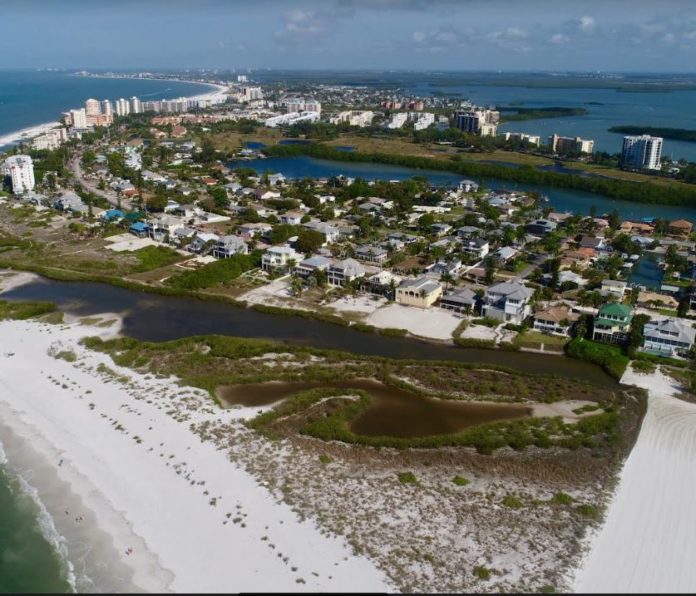(By Kurt Kroemer) Last Thursday at the Town of Fort Myers Beach Management & Planning meeting Environmental Project Manager Chadd Chustz gave the town council an update on the upcoming beach renourishment project. Here’s how what he presented impacts the CWA.
The first twenty minutes of his presentation got deep into the definitions of acronyms used to define various aspects of the project. Chadd’s presentation was quickly interrupted by a question from Councilman Jim Atterholt who asked what the difference was between ECL and MHWL as it relates to the project.
The Erosion Control Line or ECL is defined as a surveyed point between private ownership and state ownership, as it relates to a beach renourishment project funded by the State. When the State pays to have additional sand brought into the beach to repair erosion, then this Erosion Control Line is surveyed and documented which ends the upland landowners beach property line and begins the state’s beach ownership no matter how much new sand is deposited.
Normally, the upland landowner of beach front property owns to the Mean High Water Line, or MHWL. This is the point in the sand where the high tide of the Gulf comes up on the beach. The word “mean” comes from a 19 year average calculation.
As the sand moves in and out on the beach, the MHWL constantly moves higher and lower over time and is dependent on sand movement. The following is an example of how to think about the MHWL. Over 19 years, if a marker is put on one of the support posts of the Big Carlos Pass Bridge, an average point could be found where the high tide water reaches. Then, from this marker, surveyors can cast a straight line to the beach, designating this MHWL point onto the beach. When the point on the beach is equal height to the marker on the bridge support, you have found the MHWL. While surveyor’s tools are more technical, this example gives one insight to how it works.
An upland beach front property owner on Fort Myers Beach normally owns all the land between the lot and the MHWL out by the Gulf. Over time, as accretion or erosion moves the beach in and out, the length of the upland landowner’s lot grows or shrinks. A new ECL becomes the firm end point of the upland landowner’s property line forever. Any new sand, by accretion or deposited, is now owned by the state between the ECL and the Gulf.
So why was this topic so important at last week’s M&P meeting? The Florida Department of Environmental Protection has asked the town to prepare for an Erosion Control Line down the length of the beach where the Critical Wildlife Area is located. The ECL would not be required if the CWA land is considered state owned property. However, the current lawsuit I am involved with along with my neighbor Eddie Rood on the South end can change this.
Should we be successful at proving ownership of the land designated as CWA, it will set a precedent for all landowners currently upland from the CWA to make the same claim. Should the FDEP set an ECL line, it will in effect, confirm upland beach front owners own the land, which is currently designated CWA. On top of this, the town will have additional costs associated with the renourishment project of around $1.3 million dollars due to this land being privately owned.
Kurt Kroemer can be reached by e-mail at info@squeezeMeInn.com

